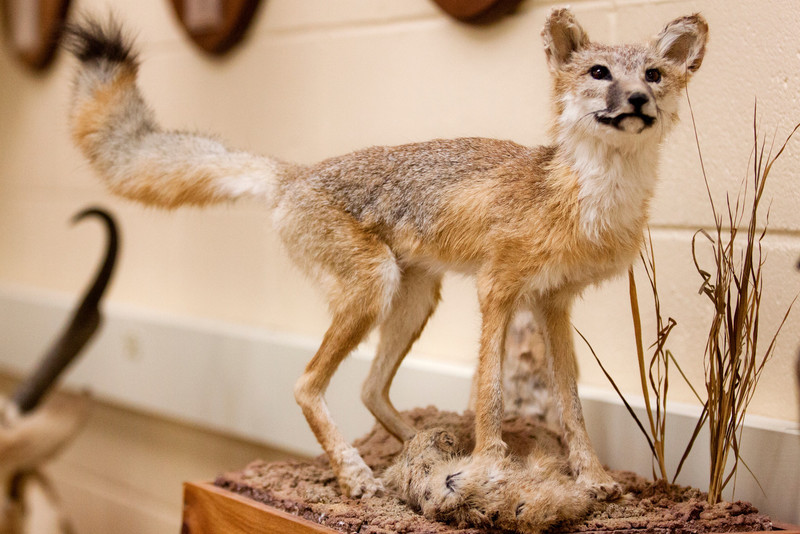CSC to benefit from Nebraska Environmental Trust grant

CHADRON – Chadron State College faculty member and Applied Sciences department chair Dr. Teresa Frink and students will have the opportunity to continue their work assessing the distribution of the swift fox (Vulpes velox) thanks to a $210,000 grant from the Nebraska Environmental Trust (NET).
The scope of the study of the Tier 1 at-risk species covers 26,000 square miles in western Nebraska. UNL doctoral candidate Lucia Coral works with Frink and others to create a map defining the realm of the species.
Dr. Joseph Fontaine, a professor of wildlife ecology and assistant unit leader with the Nebraska Cooperative Fish and Wildlife Research Unit based at the University of Nebraska-Lincoln wrote the successful NET grant application with UNL faculty member Dr. Jenny Dauer and Frink.
“Until we know where they’re at, regulatory agencies don’t have the info they need. Once we know where they’re at, we can reduce requirements in places where they don’t live and focus our management efforts where they do live so we can improve the way they are managed,” Fontaine said.
The NET joins other partners in the pursuit including Nebraska Department of Roads, Nebraska Game and Parks and the U.S. Forest Service. Photos and other project data are archived on the Nebraska Canid Project website.
The grant will cover equipment costs such as the purchase of additional trail cameras for CSC and UNL students to check out and supply kits to set up camera traps, which have captured images of many different species.
Administrators of the swift fox project are currently interviewing a coordinator whose salary will also be supported by the NET grant. The coordinator will facilitate the project and study how students are learning and transferring conservation science to their communities.
Fontaine said Frink has been and will continue to be a major player in a major collaboration designed to add significantly to state wildlife biologists’ understanding of what factors are limiting the swift fox.
“She’s amazing at helping us develop relationships with landowners. She believes in what she’s doing and she’s passionate in her work with students. It’s great to have an opportunity to work with someone like that. She’s integral. This whole thing would not be possible without her leadership,” Fontaine said.
With about 97 percent of Nebraska privately owned, obtaining access to position trail cameras in rural areas to record the presence of swift fox can be difficult, Fontaine said. To date, 120 property owners have agreed to cooperate with the project. Fontaine said these landowners are continuing a great legacy of Nebraska land stewards who harbor wildlife.
“We are so dependent on local land owners. We can’t overstate how much we appreciate them participating in the study of these wonderful animals,” he said.
He added college students are prepared and ideally positioned to build a network with land owners.
“They have a passion and desire to go back to family farms, ranches and communities. They possess great potential as ambassadors for what is a very good conservation project,” Fontaine said. “This is an opportunity for students to invest themselves. They can go into the field, do real conservation work and then share what they’ve learned from the amazing trail cam photos with their communities.”
Although the project is scheduled to conclude in December 2018, Fontaine hopes that study of the species will continue beyond that date.
—Tena L. Cook, Marketing Coordinator
Category: Campus News
